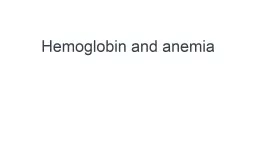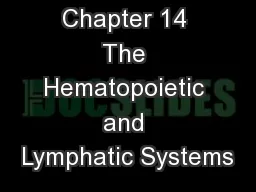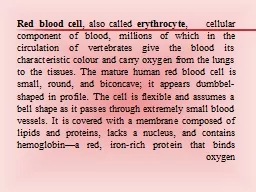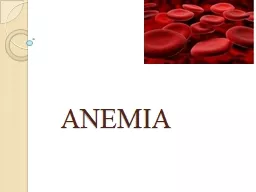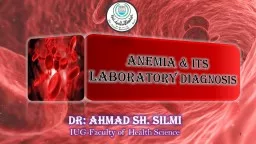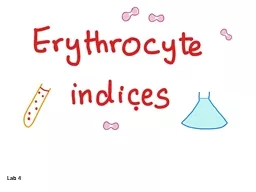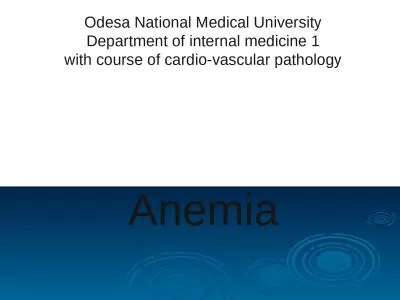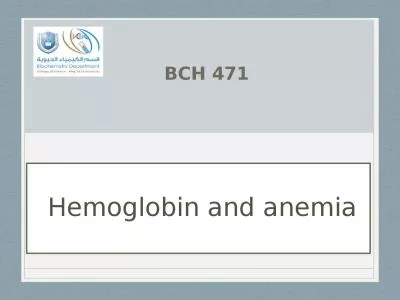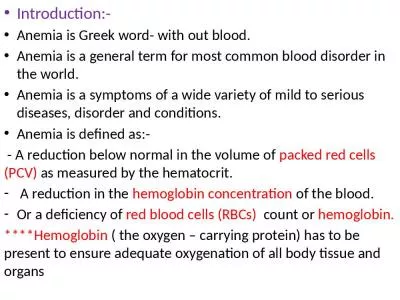PPT-Anemia ANEMIA any condition in which the number of red cells, the amount of hemoglobin
Author : eloise | Published Date : 2022-02-24
a pathophysiological condition in which the body cannot meet its demands for oxygen M Hb lt135 Hct lt41 F Hb lt12 Hct lt36 Erythrocyte Indices Hgb M 140180
Presentation Embed Code
Download Presentation
Download Presentation The PPT/PDF document "Anemia ANEMIA any condition in which..." is the property of its rightful owner. Permission is granted to download and print the materials on this website for personal, non-commercial use only, and to display it on your personal computer provided you do not modify the materials and that you retain all copyright notices contained in the materials. By downloading content from our website, you accept the terms of this agreement.
Anemia ANEMIA any condition in which the number of red cells, the amount of hemoglobin: Transcript
Download Rules Of Document
"Anemia ANEMIA any condition in which the number of red cells, the amount of hemoglobin"The content belongs to its owner. You may download and print it for personal use, without modification, and keep all copyright notices. By downloading, you agree to these terms.
Related Documents



